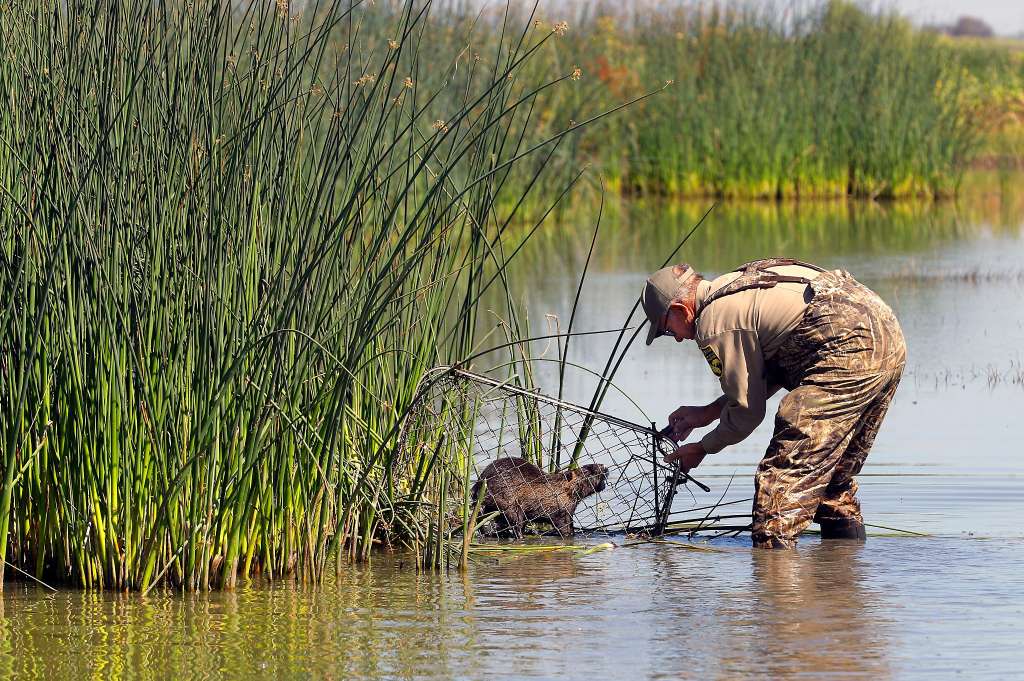In 1948, game warden and pilot Elmo Heter executed a plan years in the making to reintroduce beavers into the mountainous wilds of Idaho. His plan sounded simple, Idaho Fish & Wildlife professionals would work with skilled trappers to catch nuisance beavers from abundant areas adjacent to mankind, pack them into wooden crates, load them onto an airplane and, whilst tethered to a parachute, drop the sub-aquatic rodents into portions of the wilderness for reintroduction efforts. The crates would burst open on impact, freeing the furry engineers encased inside to roam the wilds of their new abode.
According to Heter, younger animals, preferably all from the same colony, would be ideal for the transplant program. Mainly because they are less territorial, meaning less odds of mortality due to fighting. Youngsters also aren’t as apt to migrate as readily, and have better odds of elongated survival in the “drop zone”.
The Department had it all figured out ahead of time - Heter contracted the assistance of a “test beaver” named Geronimo to assist with practice drops prior to the plan’s final execution. For his service, Geronimo would be the inaugural beaver to be “redistributed” - complete with three lovely lady beavers. His transplanted colony was later recorded to be established and healthy.
The Department would utilize surplus parachutes from World War II for the endeavor. The testing phase saw several different materials of parachute experimented with, as well as several different box prototypes, as Heter explained:
The first box tried had ends made of woven willow. It was thought that, since willows were a beaver's natural food, the animal would gnaw his way to freedom. This method was discarded when it was discovered that beavers might chew their way out of these boxes too soon, and be loose in the plane, or fall out of a box during the drop.
A beaver emerges from one of the dropped crates in the Idaho wilderness. (Still from “Fur For The Future”)
In all, 76 beavers would complete the trip, with only one documented beaver fatality from the drop, which was due to a lashing failure allowing the beaver to exit the box in mid-air.
A year following the endeavor, the surviving transplanted beavers were noted to have all built dams, lodge dens, stored food caches, and bred their first litter of offspring. The program ended after its first year, as was clear that 76 beavers was enough to restore a healthy beaver presence to the McCall and Payette Lake wilderness areas.
The Idaho beaver project gained international fame in 2015, when a local historian discovered lost footage of the program. As seen in the video (posted below), the reintroduction efforts didn’t stop at parachuting beavers.
Muskrats were cage trapped for reintroduction into other areas of the state. Trappers would bait the cages with carrots to target foraging muskrats. Once caught, the ‘rats were deposited into holding pens, fed a bounty of carrots, loaded into trucks, tagged for record-keeping, and redistributed (by hand no less) into new locations.
Pine marten were also trapped, tagged and relocated to wildness stretches of Idaho forest.
From the Idaho F&W video, a collection of reintroduced marten survey their new habitat. (Still from “Fur For The Future”)
Worthy to note, all the wildlife managers in the video appear to be glove-less - quite bold of the 1950’s conservationist, especially whilst handling a tenacious predator such as the marten. Something tells me rabies and other furbearer diseases weren’t quite as common in the 50’s - it was likely best to let those scratch wounds bleed out! Nothing that the whiskey won’t tame.
Its no big secret that amid over-harvest of furbearers, habitat loss through agriculture and housing, and competition for resources, many fur bearing species were pushed to the brink of extinction in many areas throughout the late 19th and early 20th centuries. Critics of trapping activities are quick to point out that trapping had a role in extirpation of furbearers. What you don’t hear very often, is the fact that fur trappers were working directly with wildlife managers to re-establish healthy furbearer populations - long before the idea of an animal rights activist became a mainstream subject.
Much like the partnership between trappers and wildlife professionals in 1950’s Idaho, modern trappers of today continue to work with wildlife managers and biologists to bolster healthy and diverse furbearer populations across North America. A shining example of hands-on conservation at work.
While the marten and muskrat reintroduction were greatly out-shined in the mainstream media by Heter’s parachuting beavers, their respective marks on Idaho’s rich trapping history and conservation efforts are as equally immense.
The 14 minute video is featured below:












The Wildlife Ecology Institute has recently announced new research being conducted to dive into the ‘rat’s potential role as an indicator species for wetland quality in the Great Lakes Basin. Researchers are reviewing multiple sources pertaining to muskrat population data, such as state trapper reports and counts of muskrat huts, and comparing those data sets with that of wetland quality, and additional sensitive wetland-wildlife species.